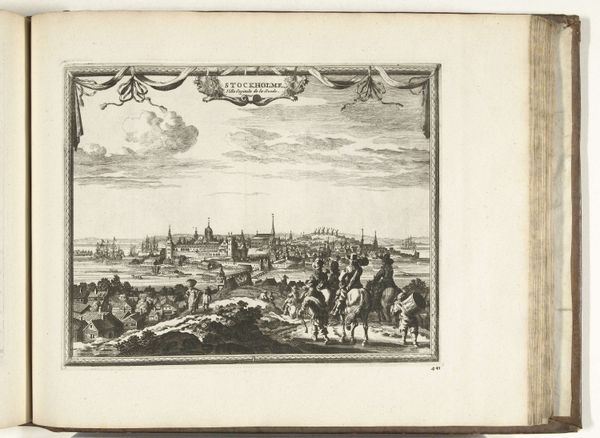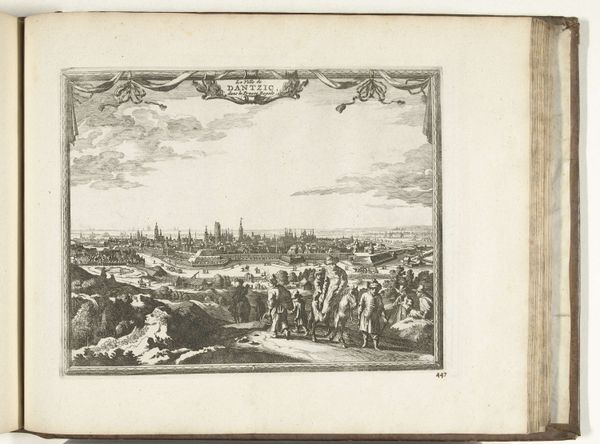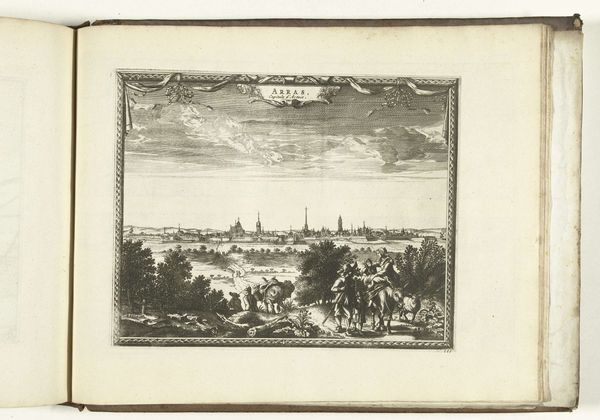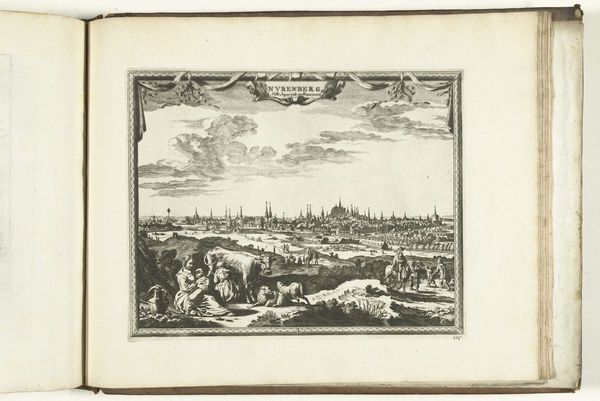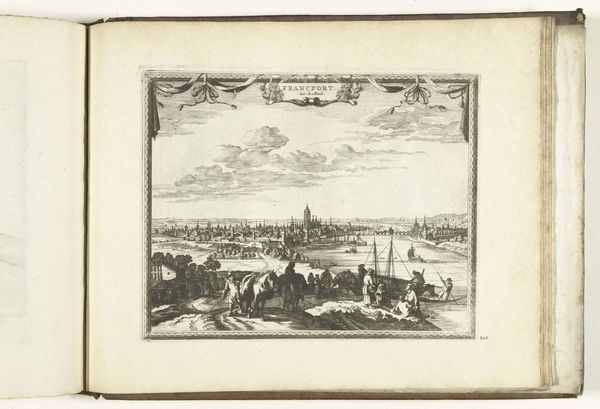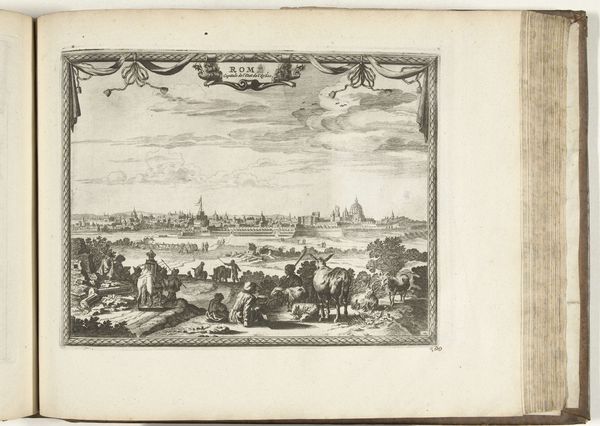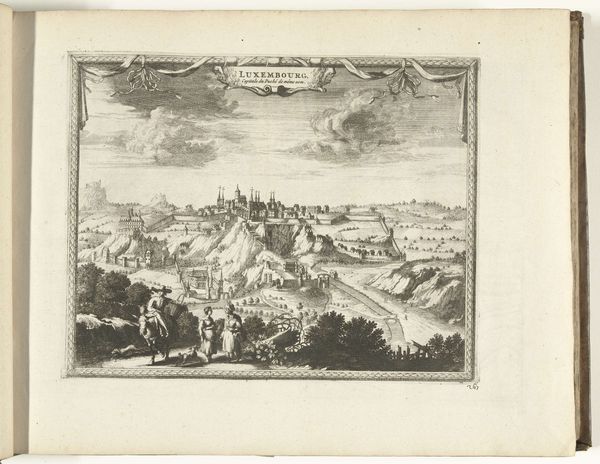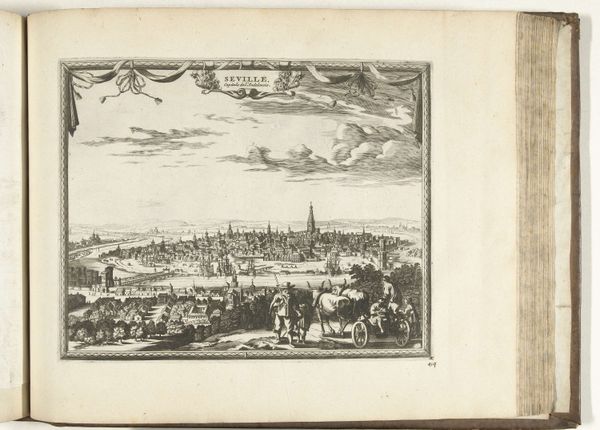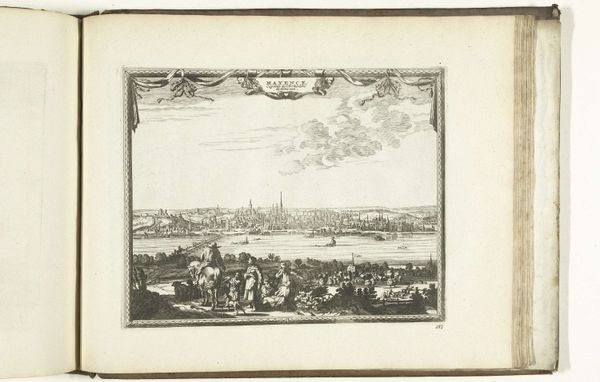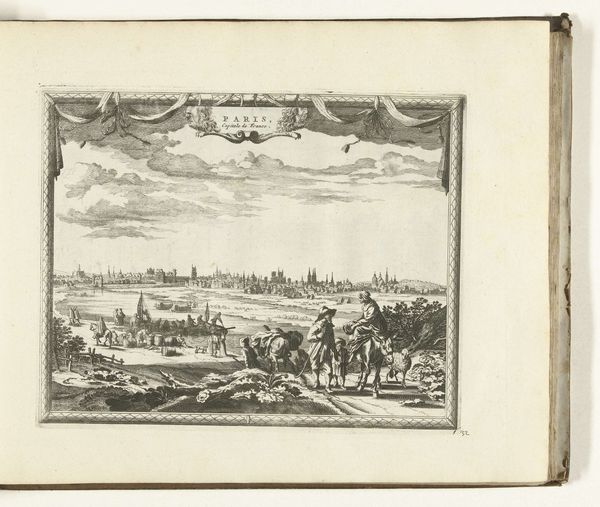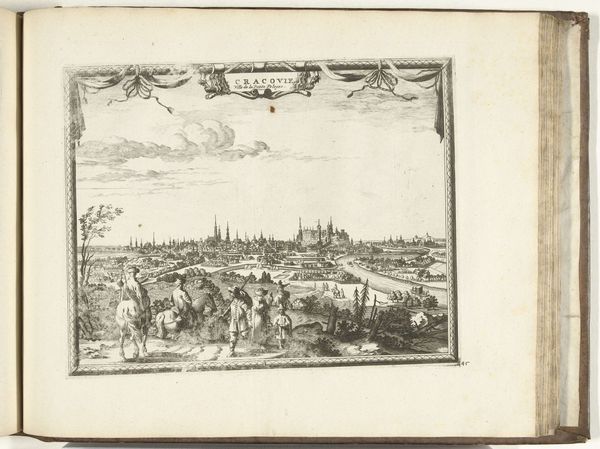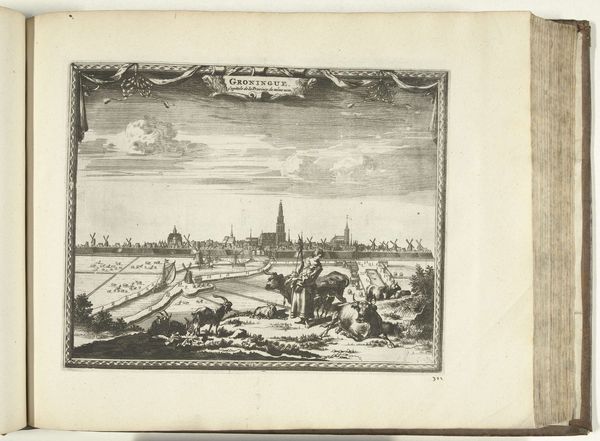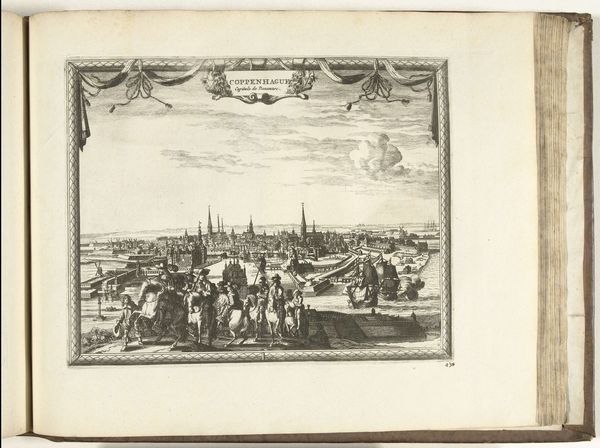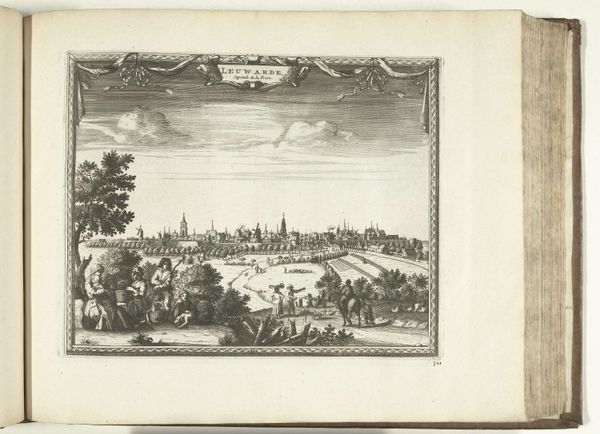
print, etching, paper, engraving
#
baroque
# print
#
etching
#
landscape
#
paper
#
cityscape
#
engraving
Dimensions: height 220 mm, width 273 mm
Copyright: Rijks Museum: Open Domain
Editor: This is a print from 1726 entitled "Gezicht op Trier," or "View of Trier," made by an anonymous artist using etching and engraving. It's a cityscape, rendered in great detail. The overall mood is quite serene and composed. How do you interpret this work, especially considering the time it was made? Curator: This cityscape, while seemingly a simple depiction, speaks volumes about power dynamics in 18th-century Europe. It’s crucial to understand this not just as a geographical record, but as a statement of civic pride and perhaps even territorial ambition. How are the prominent structures presented? Notice the size and placement of the church spires versus other buildings. Does this give you an insight on the religious or political influences present in the region at the time? Editor: That’s interesting, I hadn't thought of it that way. The church spires are definitely the tallest, suggesting religion's importance. I guess it's easy to overlook the messaging of it and to simply accept its surface representation as only an aesthetic appreciation of space. Curator: Precisely! And consider the people in the foreground. How does their presence – or their positioning – contribute to your understanding of who this cityscape was ‘for’? Is it celebrating everyone, or a select group? Does it reveal a certain class structure? How do you read that from what is depicted? Editor: The people seem to be working or traveling. I don't see any wealthy individuals, but it is difficult to fully discern based on the limited details. Now that you bring it to my attention, it may imply the absence or exclusion of the upper classes or a lack of emphasis on aristocratic elements. Curator: Exactly. Think of the gaze, and who it's intended for. Considering this image was likely circulated amongst a particular class, what narrative were they trying to sell? Who was deemed worthy of remembrance? The focus on working people helps perpetuate certain sociopolitical assumptions. What are we celebrating, and who is included and excluded from that celebration? Editor: I never thought a simple landscape could be so layered. I will now carry a critical understanding about intended audiences! Thank you. Curator: It’s all about understanding the social narratives embedded within art.
Comments
No comments
Be the first to comment and join the conversation on the ultimate creative platform.
